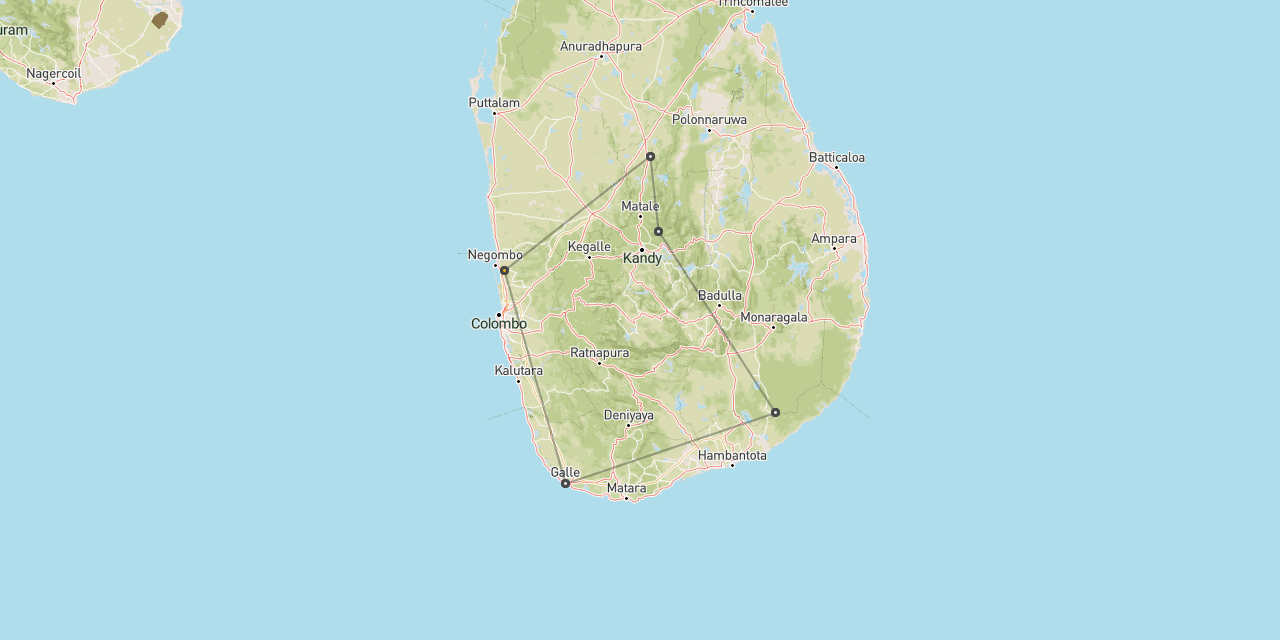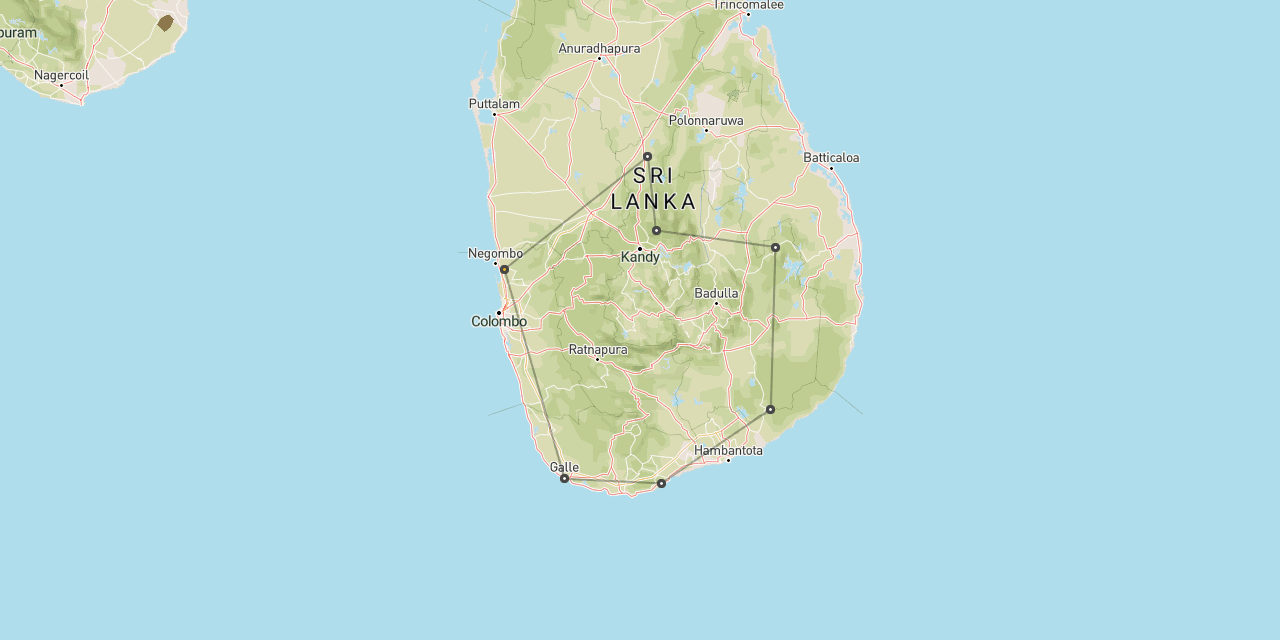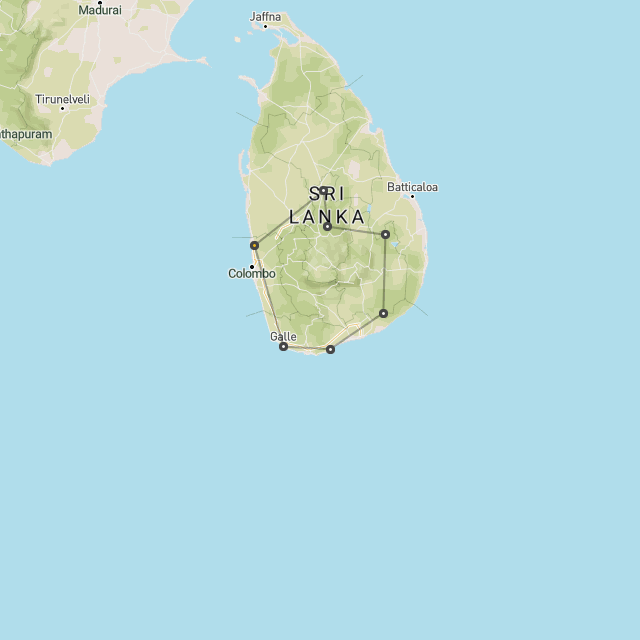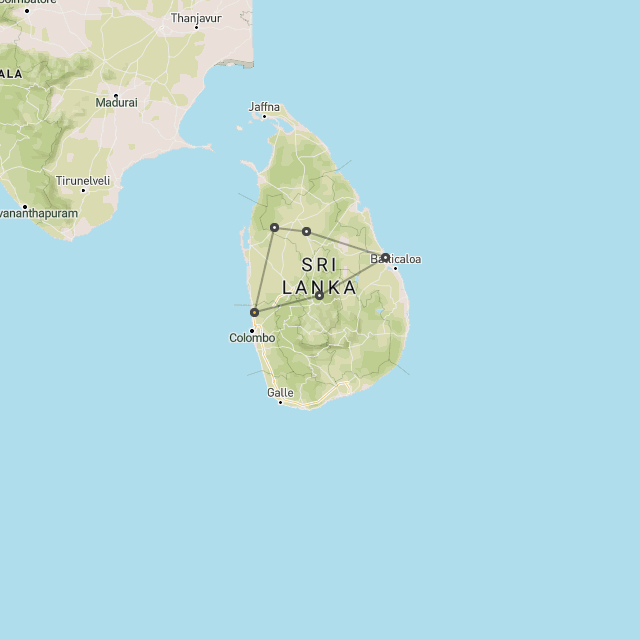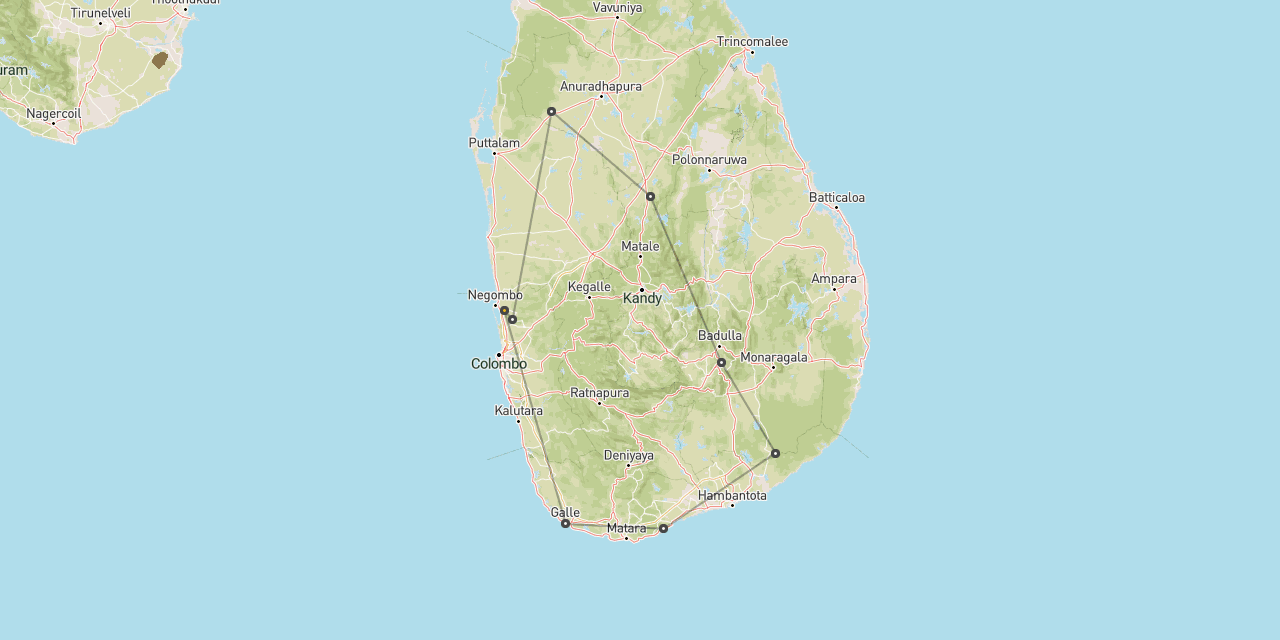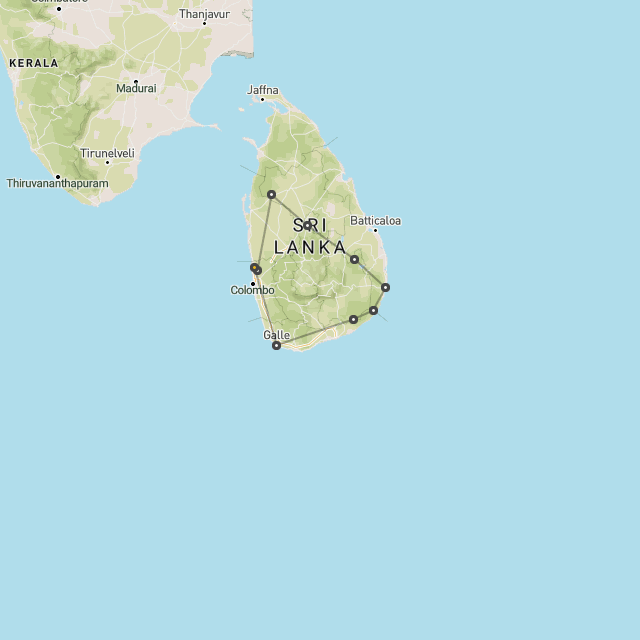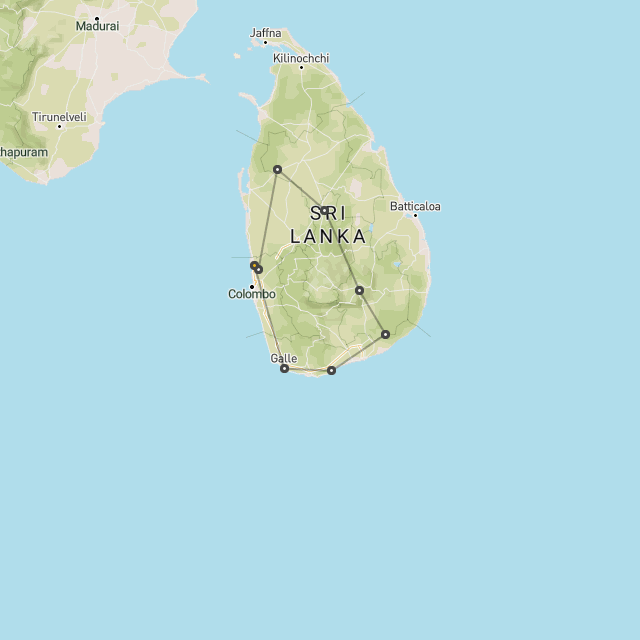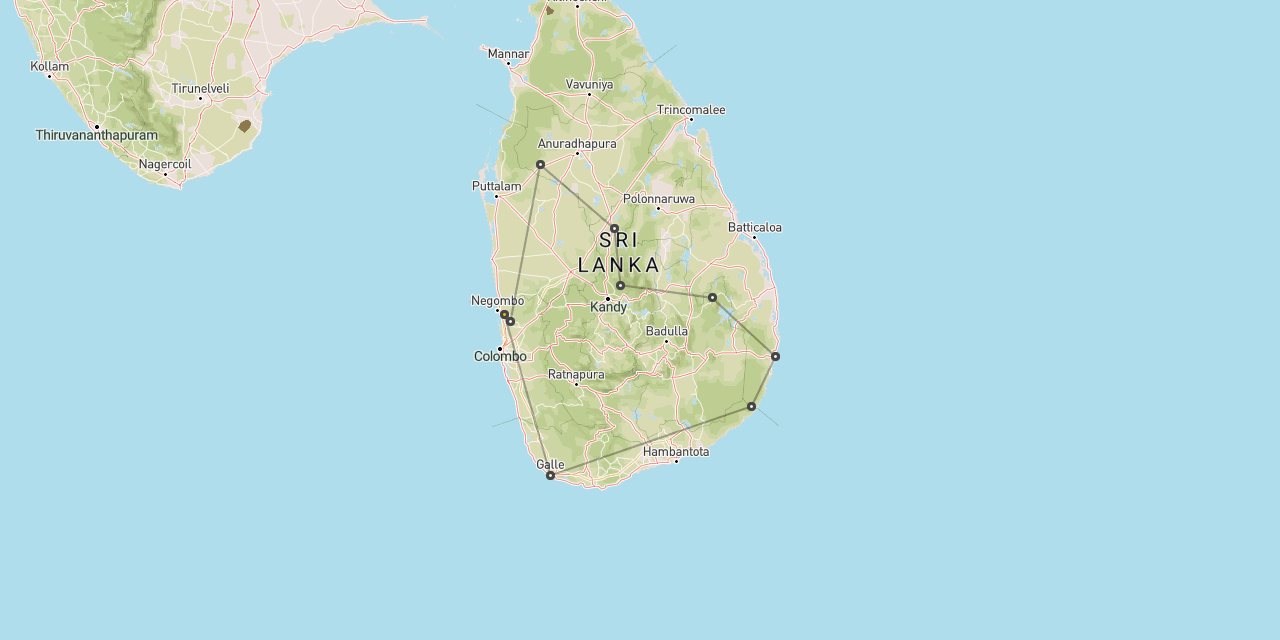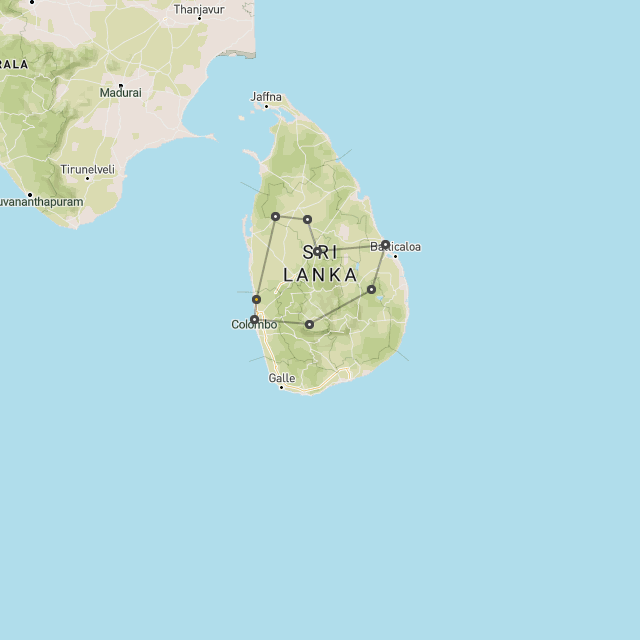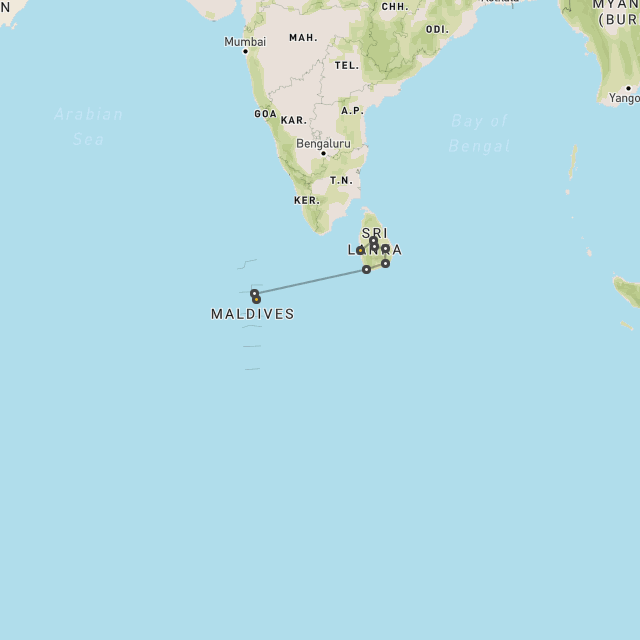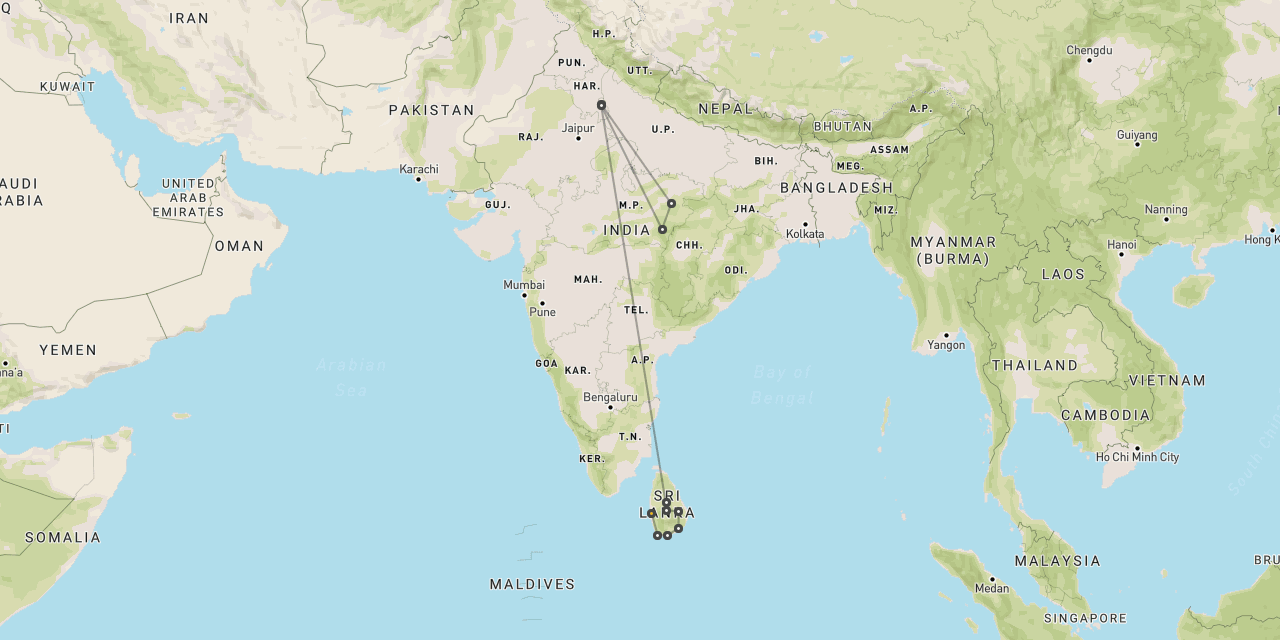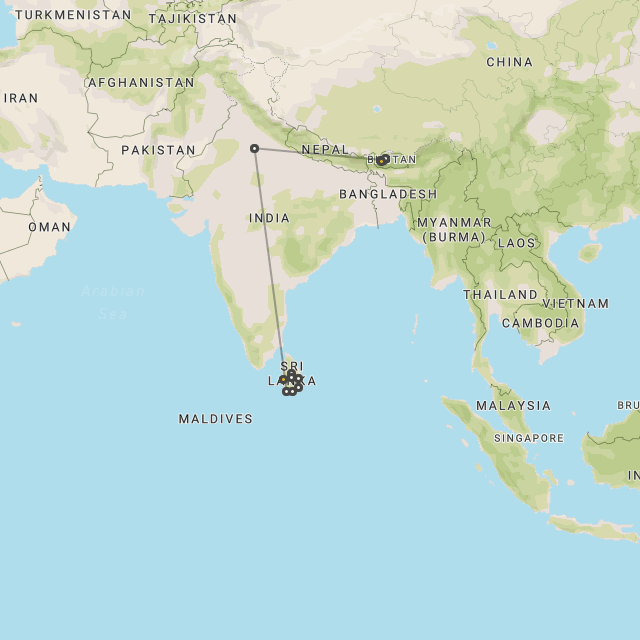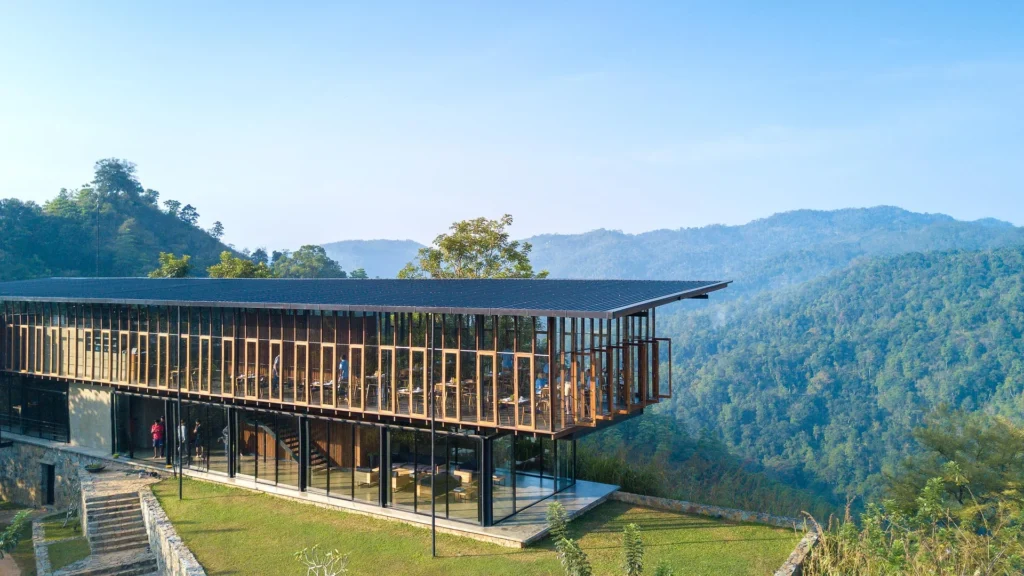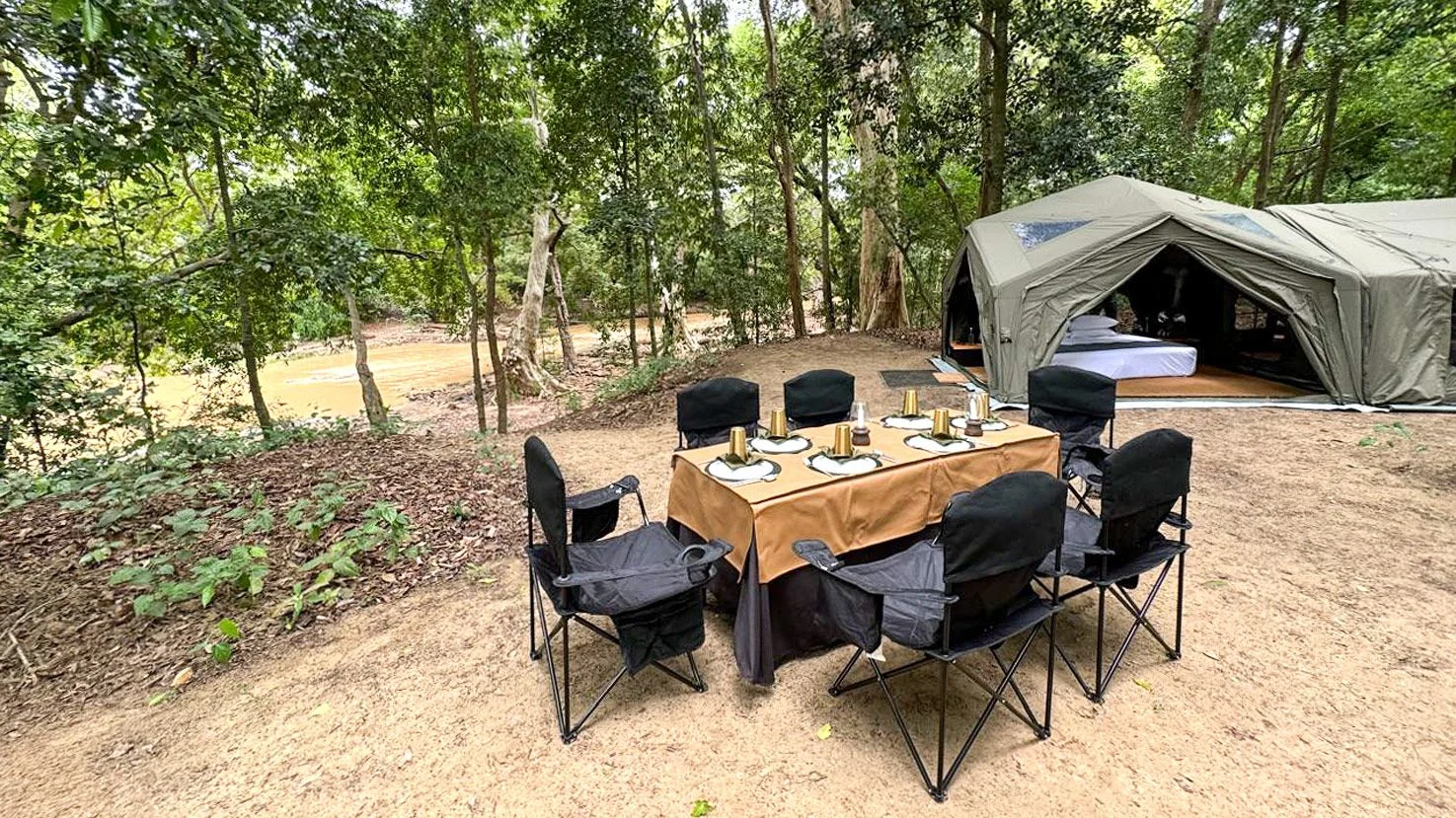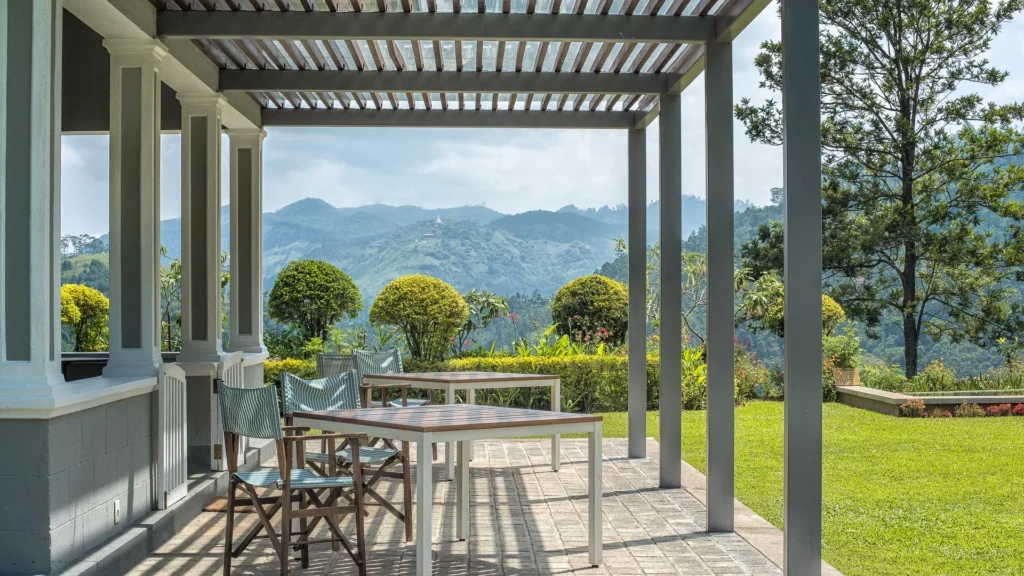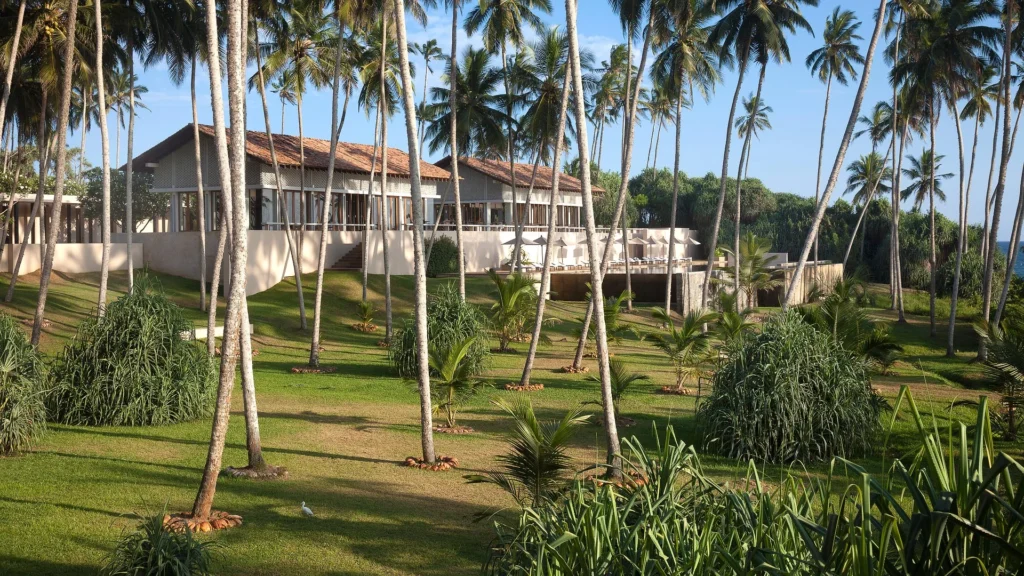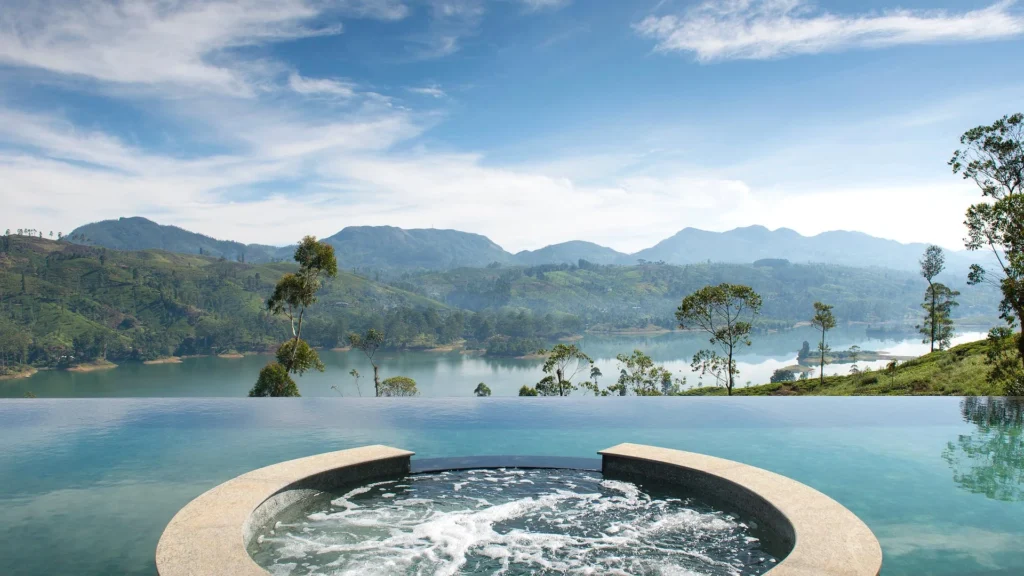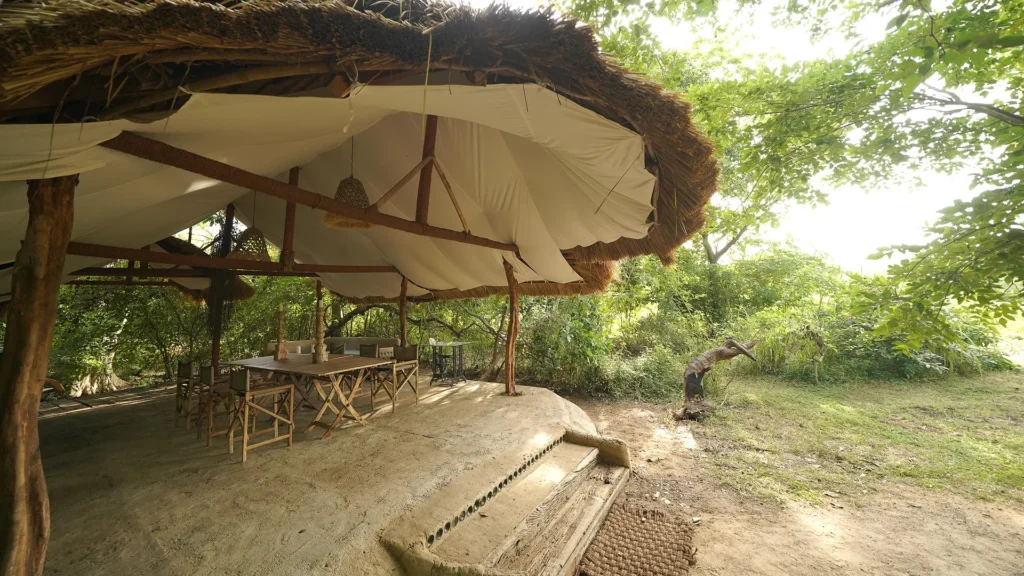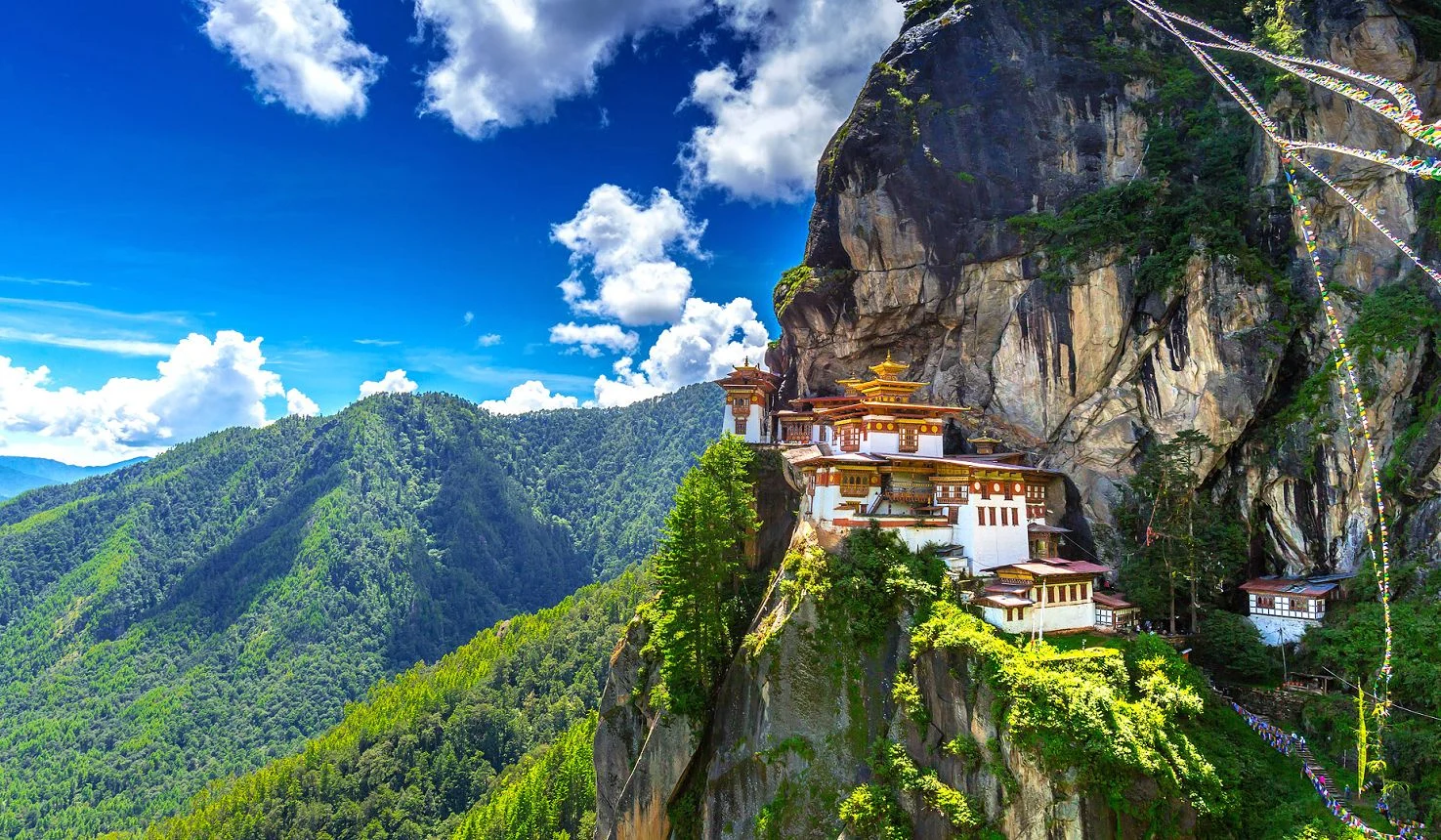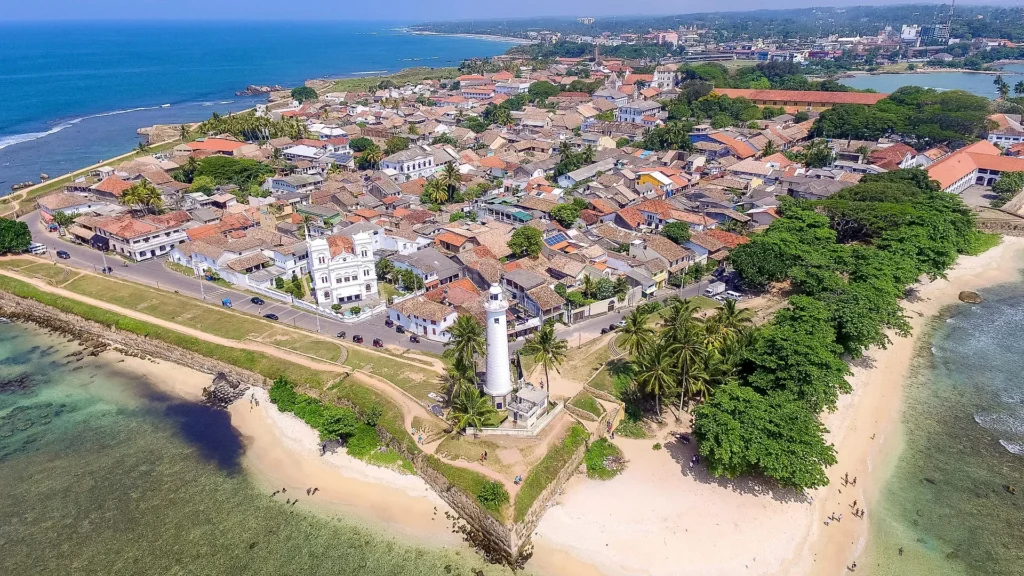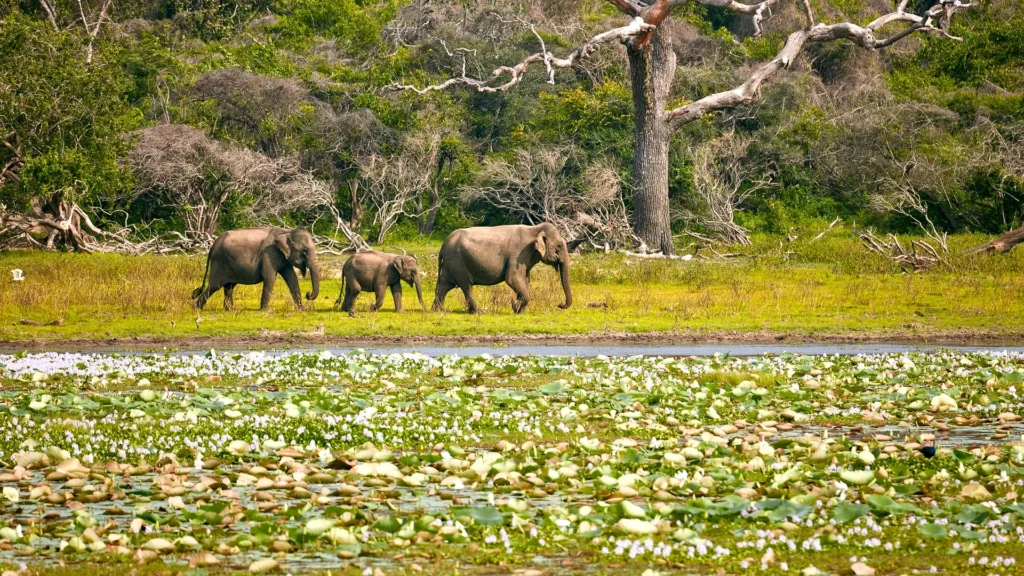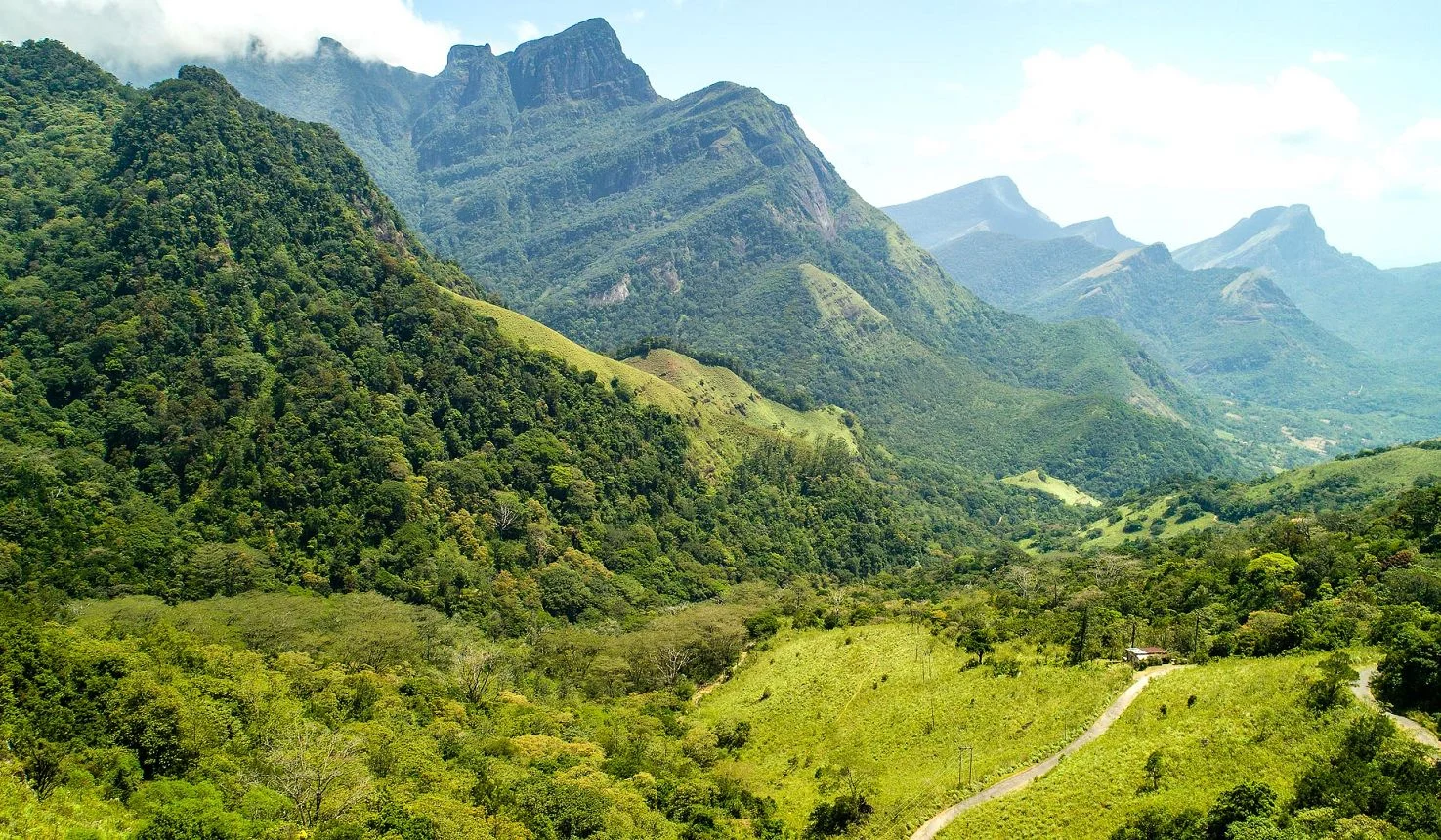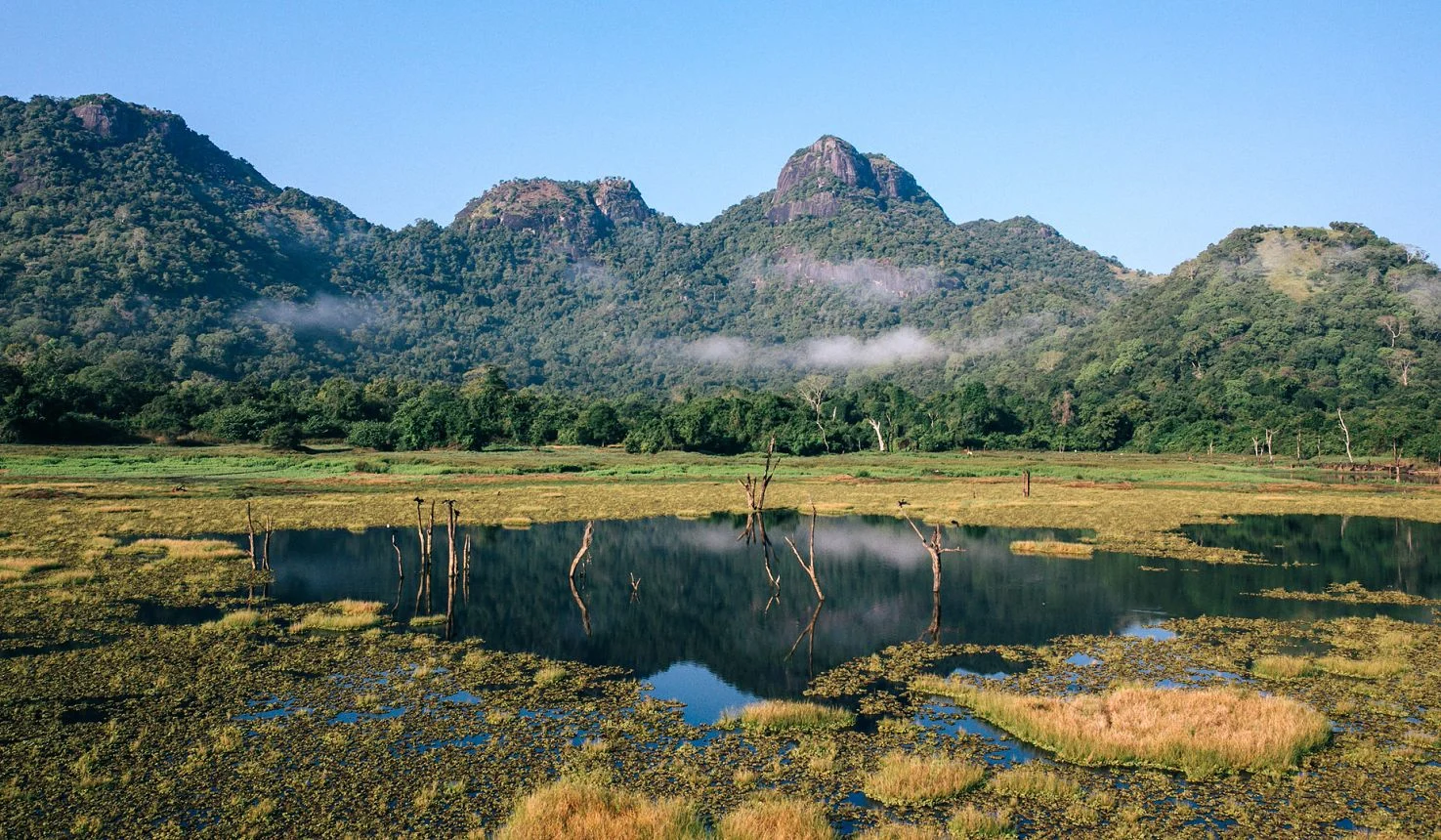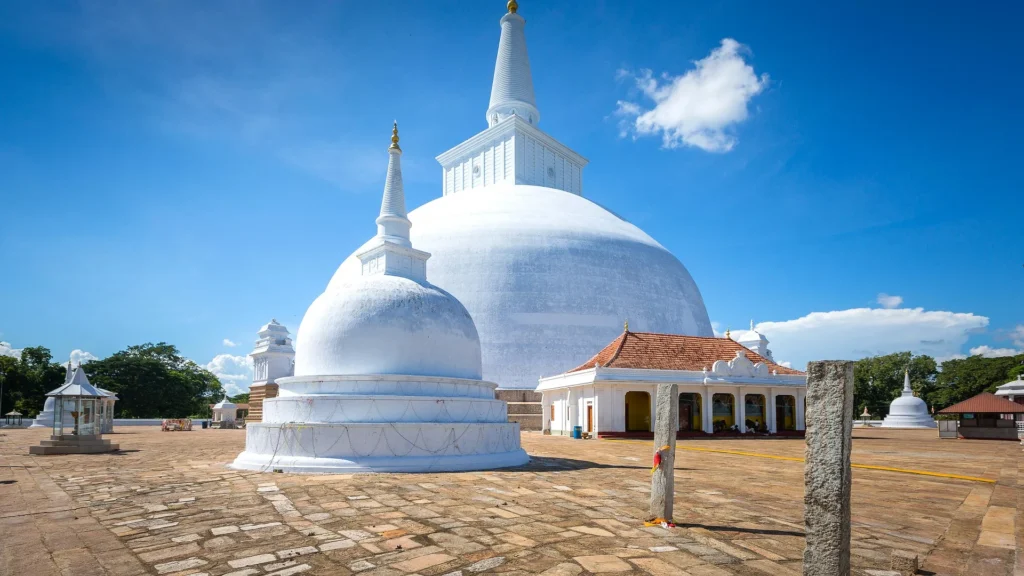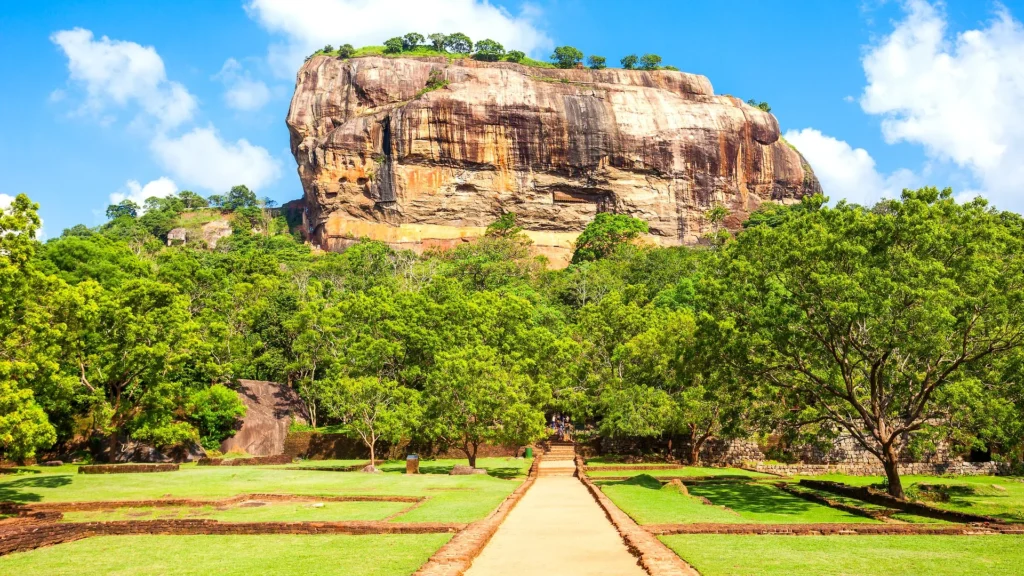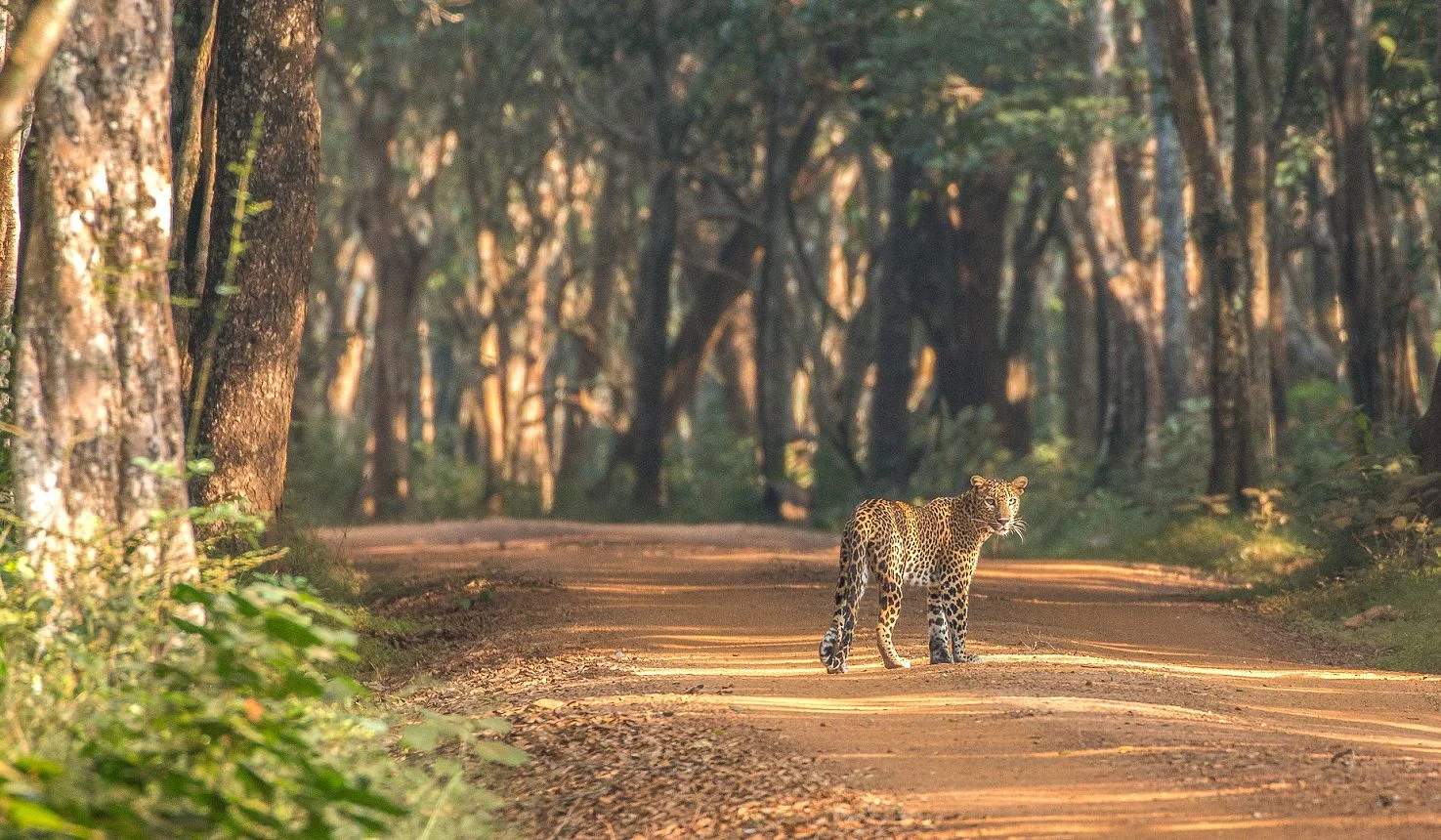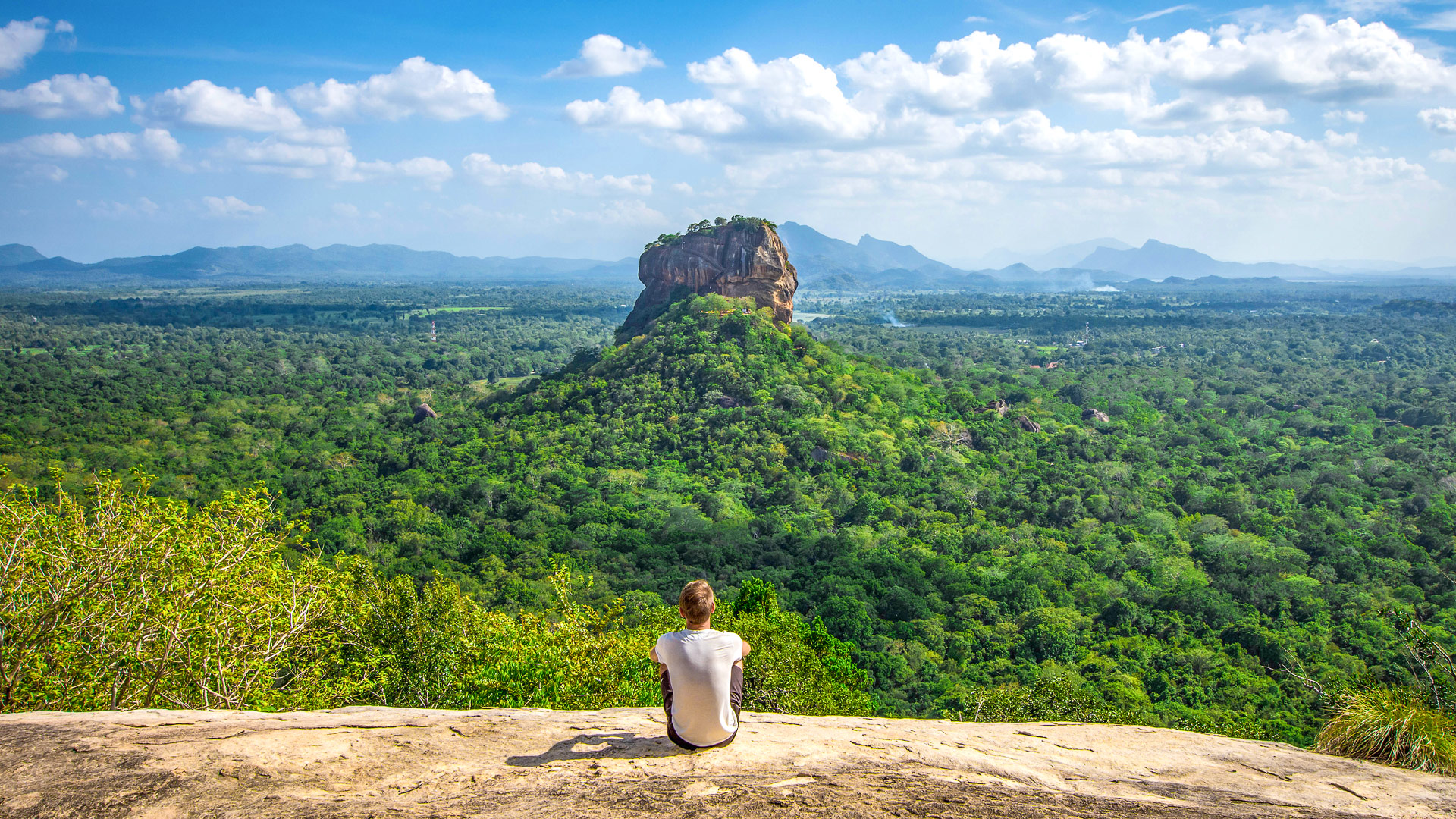
Safari in Sri Lanka
Sri Lanka
is a very large tropical island
with history, safari and diving
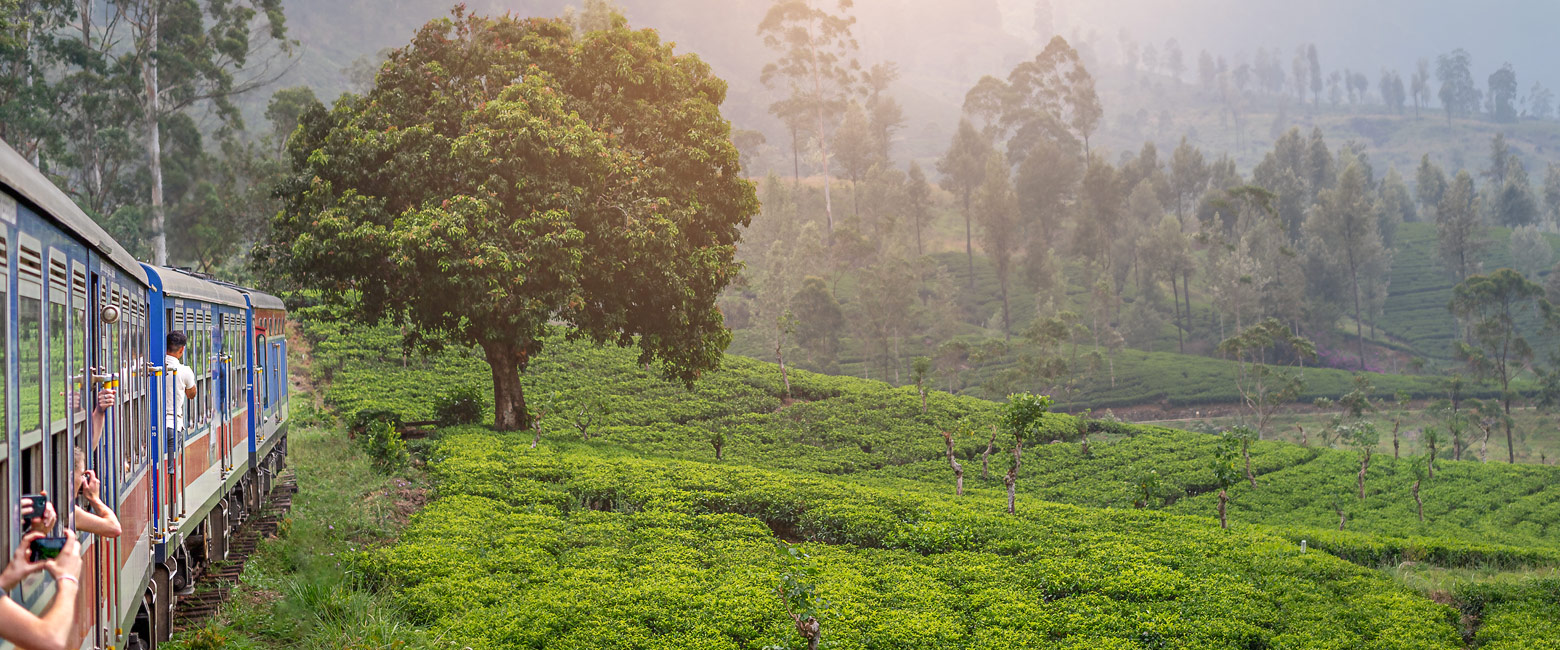
usually explored as a private-guided overland safari
Sri Lanka is a large island which lies in the Indian Ocean, immediately to the southeast of India.
Previously known as Ceylon, this wonderful tropical island offers an incredible diversity of landscapes, wildlife history and culture. It truly is a wonderful place to explore and one that easily warrants at least one dedicated 2-3 week trip.
Sri Lanka is perhaps best known as a cultural destination. The central highlands are filled with incredible Buddhist temples and the extremely impressive ruins of sacred cities. Overlaid on top of that ancient history there is lots of evidence of the European colonial era, with Portuguese and Dutch forts around the coast and the renowned British tea plantation areas up in the mountains.
Less widely appreciated is the fact that Sri Lanka also offers some genuinely interesting safari options, with at least a dozen interesting national parks, home to wildlife including elephants, leopards and sloth bears. One company even offers private mobile tented camping inside the reserves, which is arguably the most authentic safari experience on the Indian subcontinent. In addition to the popular Yala National Park in the southeast, there are at least two other reserves where you can really get away from other people and enjoy the wilderness in peace.
Sri Lanka also offers a wide range of watersports, with diving in both the northeast area of Trincomalee (Apr-Oct) and the southwest area of Tangalle (Nov-Mar), surfing in the southeast area of Pottuvil (Apr-Oct) and kite-surfing in the northwest area of Puttalam (May-Sep).
In addition there is the modern culture of the country, which is best exemplified in the vibrant capital of Colombo, but which is also very much evidenced by the many bright intelligent people that you will meet and the remarkably wide range of chic properties in which you can choose to stay.
To do a decent trip around Sri Lanka, you really need to think about a two to three week trip. These are almost always done by road, in the company of an experienced driver-guide, with options to include the occasional train ride or internal flight.
The best time of year is generally considered to be during the Jan-Dec dry season, but trips are also viable during many other months, especially during Jun-Aug if you focus on areas to the north and east.
The best place to get started is probably to browse the various areas in the Key Locations section below, which should help you to choose some areas that you might like to include, or to head to the Trip Planning section for links to our various sample trip ideas.
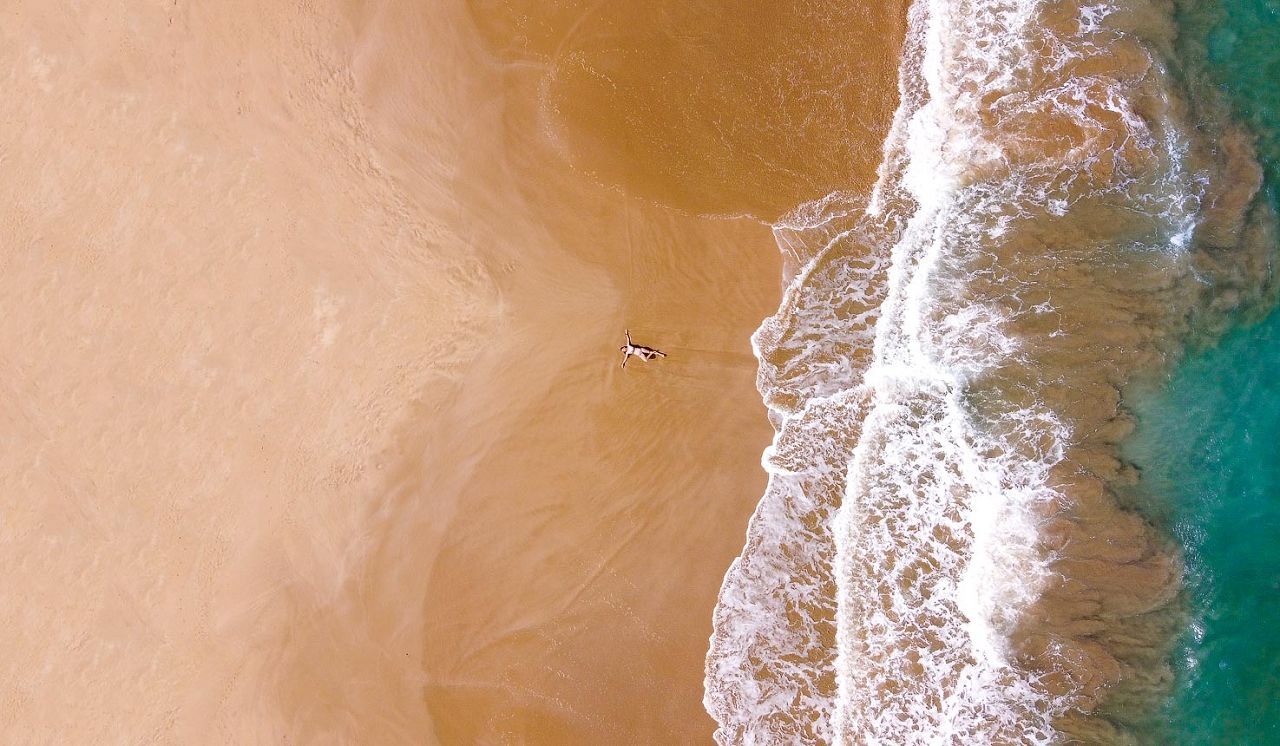
Gallery
Map
For such a relatively small island, the seasonal variation in climate is very pronounced and can have a very strong influence on choosing where to spend your time.
The best time of year to visit Sri Lanka is generally considered to be during the Jan-Mar dry season.
The period Jun-Aug can also be interesting, especially if you stick more to the north and east of the island.
Temperatures are more or less constant year round, but do vary considerably across the island. Around the coastline the day/night range on a typical day is 35/25C (95/77F), where in the central highlands the range is more like 20/10C (77/50F).
A more important variable is rainfall, which varies both seasonally and geographically …
The southwest corner around Colombo, Galle, the southwest slopes around Udawalawe and the central highlands at Nuwara Eliya experience heavy rainfall Apr-Dec.
The southeast areas of Yala, eastern areas including Pottuvil, Madura Oya, Knuckles and Wasgamuwa, as well as the northern areas of Sigiriya, Anuradhapura, Puttalam, Wilpattu, Trincomalee and Jaffna only usually experience heavy rain Oct-Dec.
Jan-Mar
The Jan-Mar period is the main dry season and conditions are good across the whole island of Sri Lanka.
Potentially high nighttime temperatures can be alleviated by sea breezes along the coast and by staying at altitude in central areas.
Visitor traffic peaks at this time, so traffic avoidance measures are recommended if you want to include the more popular locations.
Apr-May
The Apr-May period is the short rainy season in southwest, west and central areas, where conditions can be quite challenging.
Conditions in southeast, east and northern areas should be much drier.
It is therefore usual to focus trips more in those drier areas at this time of year. This tends to work quite well for safari-focused trips (Yala, Wasgamuwa and Wilpattu) and for returning visitors keen to explore lesser-known areas (Trincomalee, Jaffna, Puttalam).
However, for guests wanting to include the popular areas of Colombo, Galle, Nuwara Eliya, Kandy and Sigiriya, conditions are likely to be less than ideal.
Jun-Aug
The Jun-Aug period usually represents a lull in the rainy season in southwest, west and central areas, where conditions can vary unpredictably from excellent to challenging.
Conditions in southeast, east and northern areas should be much drier.
It is therefore usual to focus trips more in those drier areas at this time of year. This tends to work quite well for safari-focused trips (Yala, Wasgamuwa and Wilpattu) and for returning visitors keen to explore lesser-known areas (Trincomalee, Jaffna, Puttalam).
Another major factor is that May-Jul is the best season to view sloth bears, which can often be found feeding on the fruiting palu trees.
However, for guests wanting to include the popular areas of Colombo, Galle, Nuwara Eliya, Kandy and Sigiriya, there is a risk that conditions may be less than ideal.
Sep-Dec
The Sep-Dec period is the main rainy season.
This northeast monsoon primarily brings rain to the northeast, east and central areas, but storms are often strong enough to also significantly affect the west and southwest.
Travel at this time is likely to be quite challenging at times.
However, if you are keen to visit at a very quiet time of year and are not too worried about regular heavy rain showers and often overcast skies, then this would be your chance.
International flights
Almost all of our guests visiting Sri Lanka enter and depart by air via the international airport in Colombo (CMB).
Whilst there are a few long haul routes direct into Colombo, it is more commonly reached via hubs in India (mainly Delhi) and the Persian Gulf (specifically Dubai and Oman).
Road connections
Sri Lanka is normally explored by private vehicle, in the company of an experienced driver-guide, who will meet you on arrival and be with you for the duration of your trip.
The only time your guide will leave you is when you are staying at a safari lodge (where your safari is operated in a vehicle and with a guide from the lodge), in which case he will usually go and stay at a place nearby and be available to pick you up at any time. Even when staying at a beach lodge, it is usual for your guide to remain available for explorations.
Internal flights
Sri Lanka has a limited network of internal flights, the two main routes being Colombo to Trincomalee and Jaffna, both of which are in the far north, so flying back can save a lot of road miles.
Train connections
There is quite an extensive network of train routes in Sri Lanka. Starting in Colombo there are essentially four main routes …
- East into the central highlands to reach the Kandy and Nuwara Eliya areas
- Northeast to reach the distant areas of Trincomalee and Jaffna
- North along the coast to reach Puttalam
- South along the coast to reach Galle and Tangalle
If you specifically want to include a rail journey in your trip, then it should be possible for you to take the train, whilst your driver-guide drives on to meet you at the far end. The most popular route for this is the short but scenic journey that connects the Kandy and Nuwara Eliya areas.
Hiking and trekking
Sri Lanka contains a few areas where day hikes are the best way to explore, perhaps most notably in the high mountain forests of Knuckles National Park. These are easily done whilst staying at a lodge in the vicinity.
We do not presently offer any multiple day trekking routes, although we could certainly look into it if you are interested.
Where to stay
The usual way to go about choosing where to stay during your trip is to start by selecting the locations you would like to visit, then looking at the various options in each area.
best explored over two to three weeks
let us know your thoughts about Sri Lanka
and we will help you create the perfect trip
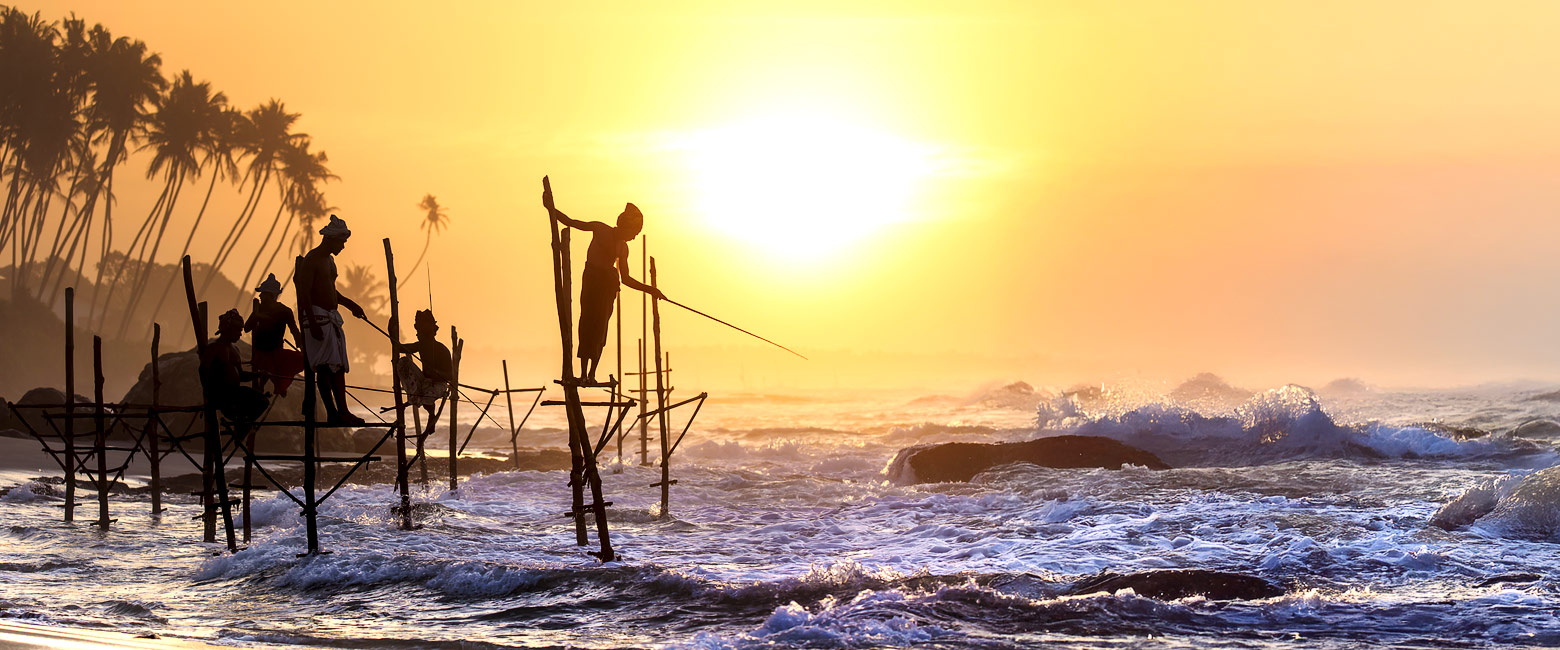
Extraordinary tailor-made adventures,
from earthy and edgy to easy and extravagant
From around USD 2500 per person, you set the ceiling
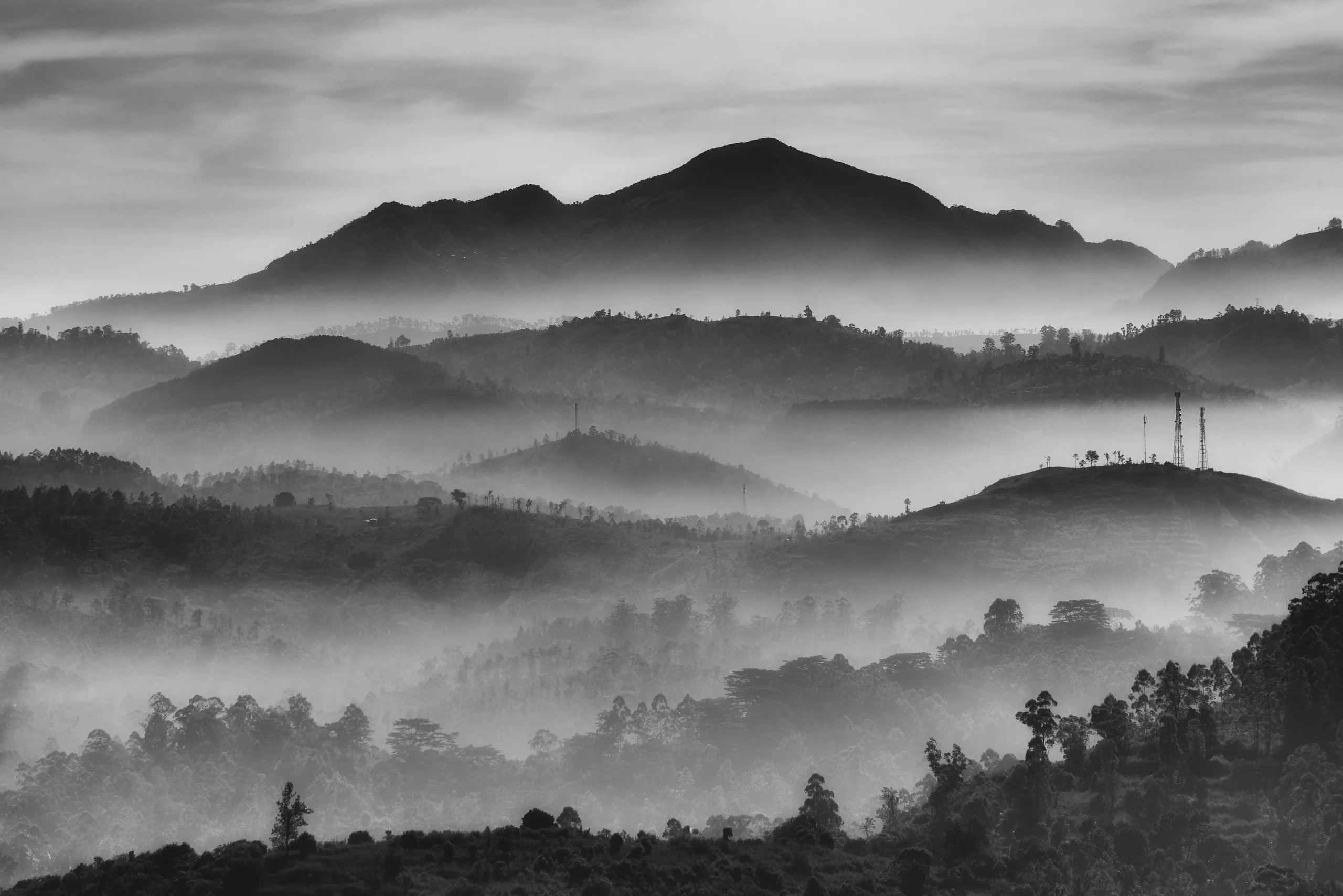
Get started on your trip
It’s never too soon to get in touch, we are here to help with every stage of your planning.
Sample Trips
Here are some of our popular trip shapes
Best Lodges
We regularly inspect and photograph all of the the best lodges, to ensure that we always recommend the most suitable options
Key Locations
Take a look around related locations. Click ‘View more’ to explore locations further afield.





































